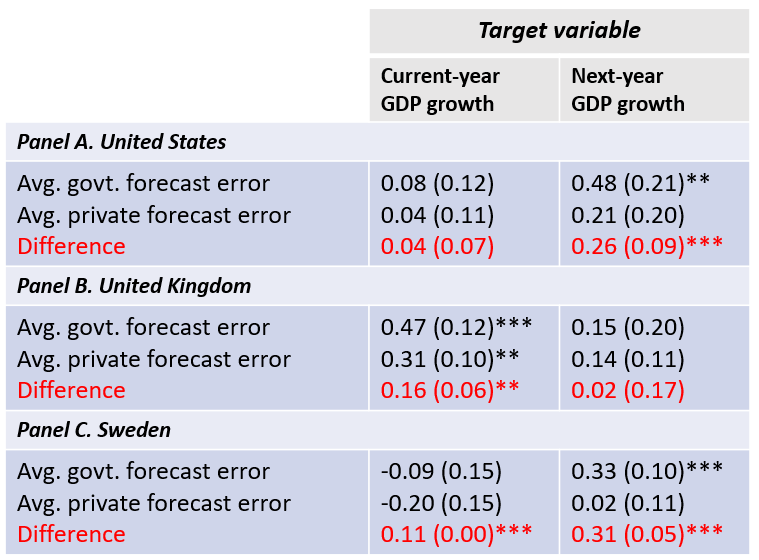References
Akhmedov, A. and Zhuravskaya, E. (2004). Opportunistic Political Cycles: Test in a Young Democracy Setting. The Quarterly Journal of Economics, 119(4):1301–1338.
Alesina, A. (1988). Macroeconomics and Politics. NBER Macroeconomics Annual, 3:13– 52.
Alesina, A., Cohen, G. D., and Roubini, N. (1992). Macroeconomic Policy and Elections in OECD Democracies. Economics & Politics, 4(1):1–30.
Alesina, A. and Paradisi, M. (2017). Political Budget Cycles: Evidence from Italian Cities. Economics & Politics, 29(2):157–177.
Bohn, F. and Veiga, F. J. (2021). Political Forecast Cycles. European Journal of Political Economy, 66:101934.
Boukari, M. and Veiga, F. J. (2018). Disentangling Political and Institutional Determinants of Budget Forecast Errors: A Comparative Approach. Journal of Comparative Economics, 46(4):1030–1045.
Boylan, R. T. (2008). Political Distortions in State Forecasts. Public Choice, 136(3):411– 427.
Brender, A. and Drazen, A. (2013). Elections, Leaders, and the Composition of Government Spending. Journal of Public Economics, 97:18–31.
Cipullo, D. And Reslow, A. (2022). Electoral Cycles in Macroeconomic Forecasts. Journal of Economic Behavior & Organization, 202:307-340.
Drazen, A. and Eslava, M. (2010). Electoral Manipulation via Voter-Friendly Spending: Theory and Evidence. Journal of Development Economics, 92(1):39–52.
Giugliano, F. (2015). Robert Chote Reappointed as Chairman of OBR. Financial Times, September 16, 2015.
Guzzi, G. and Lisciandro, M. (2018). Il Contratto di Berlusconi con le Bufale. lavoce.info, February 16, 2018.
Kauder, B., Potrafke, N., and Schinke, C. (2017). Manipulating Fiscal Forecasts. Finanzarchiv, (2):213–236.
MacRae, C. D. (1977). A Political Model of the Business Cycle. Journal of Political Economy, 5(2):239–263.
Nordhaus, W. D. (1975). The Political Business Cycle. The Review of Economic Studies, 42(2):169–190.
Picchio, M. and Santolini, R. (2020). Fiscal Rules and Budget Forecast Errors of Italian Municipalities. European Journal of Political Economy, 64:101921.
Repetto, L. (2018). Political Budget Cycles with Informed Voters: Evidence from Italy. The Economic Journal, 128(616):3320–3353.
Rogoff, K. (1985). The Optimal Degree of Commitment to an Intermediate Monetary Target. The Quarterly Journal of Economics, 100(4):1169–1189.
Rogoff, K. (1990). Equilibrium Political Budget Cycles. American Economic Review, 80(1):21–36.
Rogoff, K. and Sibert, A. (1988). Elections and Macroeconomic Policy Cycles. The Review of Economic Studies, 55(1):1–16.
Shi, M. and Svensson, J. (2006). Political Budget Cycles: Do They Differ Across Countries and Why? Journal of Public Economics, 90(8-9):1367–1389.





